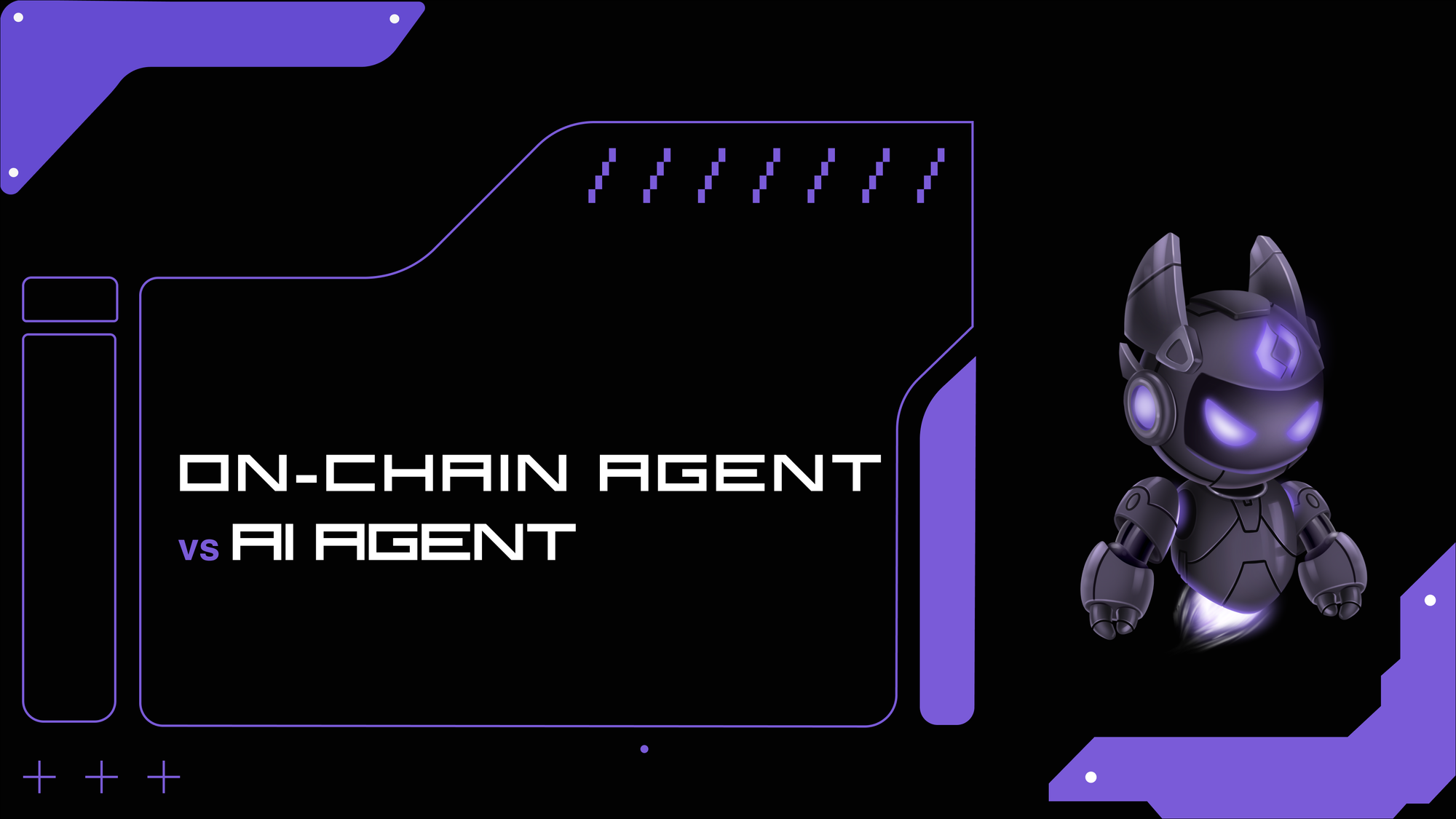On-Chain Agent vs AI Agent

The Evolving AI Agent Landscape
The AI agent space is still a nascent industry, experiencing rapid innovation and expansion. At its core, an AI agent represents the direct evolution of large language models (LLMs), which were popularized by products like ChatGPT, bringing advanced AI capabilities to the masses.
Defining AI Agents in Web2 and Web3
The nomenclature around AI agents is still being refined, especially when distinguishing between traditional (Web2) and decentralized (Web3) contexts. From the perspective of the Omo team, there are two primary types of agents: AI agents and on-chain agents.
What is an AI Agent?
An AI agent is a software program that autonomously performs actions on behalf of the user, based on instructions received from an API, LLM, or other sources. These agents can execute a wide range of tasks, leveraging the intelligence and capabilities of the underlying models or instructions.
What is an On-Chain Agent?
An on-chain agent is a programmable wallet that executes tasks on behalf of the user, based on off-chain instructions. These instructions can follow either static or dynamic pathways:
- Dynamic Pathways:
- Autonomous agents in this category take instructions from off-chain ML models via inference endpoints.
- The model's inference output is verified and proved on-chain, leading the agent to perform actions based on the data and model parameters.
- Example: An agent receiving off-chain ML model instructions to execute a swap on a decentralized exchange like Uniswap.
- Static Pathways:
- These agents follow predefined instructions from a script based on event logs, typically related to DeFi activities such as swaps, approvals, and deposits.
- The agent subscribes to specific events and reacts accordingly.
- Example: An agent reacting to an
lzReceiveevent to execute subsequent actions, such as a swap, based on predefined strategies.
The Role of Static On-Chain Agents
Static on-chain agents are inherently more secure as they are not managed by autonomous entities, making them suitable for early-stage, experimental vaults. These agents can also produce high-value wallets with niche-specific transaction histories. The Omo team can scrape transaction data from these specialized accounts to create new ML models tailored to Omo vault strategies. Over time, this will evolve static vaults into advanced, ML-optimized strategies, offering higher yields and rewards for customers. These models and agents can assist with:
- Risk Assessment: Evaluating the potential risks associated with different strategies.
- Liquidity Rebalancing: Adjusting liquidity positions to optimize returns.
- Opportunity Identification: Moving liquidity to capitalize on new market opportunities.
Web2 Agents vs Web3 Agents
The core differences between Web2 and Web3 AI agents revolve around their functionality and utility. In the current paradigm of agentic applications in Web2, many of these agents are essentially wrappers around chat-based AI models like ChatGPT. The primary purpose of these agents is automation, designed to perform various tasks on behalf of users.
Web2 AI Agents
Web2 AI agents are developed to automate a broad range of activities, primarily focusing on enhancing productivity, streamlining operations, and improving user experience. For instance, these agents can:
- Manage social media interactions: Automating tasks such as reading Twitter or Instagram feeds and sending messages.
- Customer support: Using chatbots to handle customer queries and support tickets, thereby improving response times and reducing the workload on human agents.
- Business process automation: Tools like Robotic Process Automation (RPA) and Intelligent Automation (IA) help automate repetitive back-office tasks, such as data entry, processing renewals, or generating quotes.
Despite their widespread adoption, Web2 agents often face limitations related to complex interfaces, data silos, and their inability to adapt seamlessly to new business needs. The current landscape of enterprise software struggles to keep pace with dynamically evolving market and client demands, leading to inefficiencies.
Web3 AI Agents
Web3 AI agents, on the other hand, are designed to operate within decentralized environments. These agents not only automate tasks but also execute transactions and perform state-changing actions on the blockchain. Key functionalities include:
- Executing smart contract interactions: Automating DeFi strategies, managing liquidity pools, and executing trades based on market conditions.
- Decentralized governance: Participating in DAOs by automating voting processes and proposal evaluations based on predefined criteria.
Conclusion
The distinction between AI agents and on-chain agents is crucial for understanding the future landscape of DeFi and blockchain technology. While the space is still evolving, the innovations in both static and dynamic pathways for on-chain agents promise a more secure, efficient, and profitable ecosystem for users and developers alike. As these technologies mature, the potential for higher yields and improved user experiences will only continue to grow.
